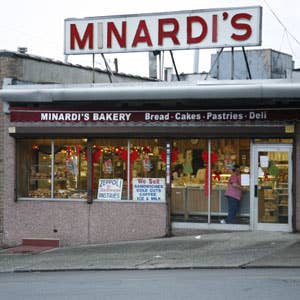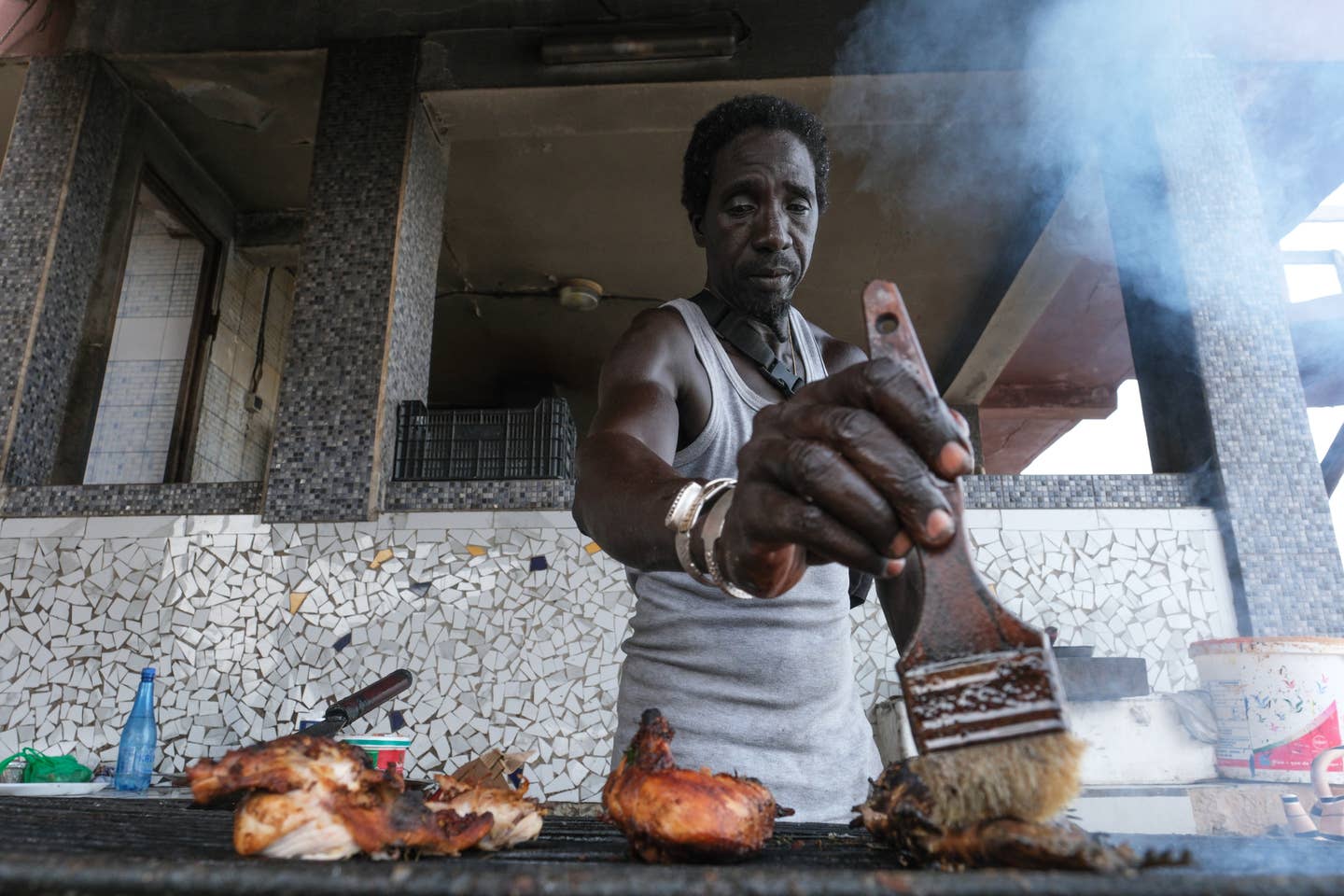
Staff of Life
One family’s quest to preserve the making of Saint Joseph’s bread—beautifully decorated loaves eaten during the feast of Saint Joseph.
Christina Minardi, her cousin Tommy, and their uncle Sal hover around a flour-dusted table at their family's bakery in Paterson, New Jersey. A mountain range of old dough mixers, rollers, racks, and ovens sprawls across the cinder-block room, and the air smells of yeast and bread crust. On the table sits a large sheet of satiny dough, an Ace comb, and a paring knife—but no one touches a thing. "Ma's the shaper," explains Christina. "We can't start without her."
The Minardis are about to make pane di San Giuseppe, or Saint Joseph's bread—the intricately decorated loaves eaten during the feast of Saint Joseph, observed each year on March 19 in Sicily and in Sicilian communities across the United States. Annunziata Minardi, the grandmother of Christina, Tommy, learned how to make the bread when she was a child growing up in the Sicilian village of Santa Croce Camarina and brought the skill with her to the States. When the bakery opened, in 1927, it was one of the few in the New York metropolitan area to offer the specialty. In the 1970s, the entire family used to pitch in to fill hundreds of orders between mid-February and Easter, but in recent years demand for the bread has dwindled. "My grandmother died in 1996," says Christina. "The tradition began to die with her generation." Still, the Minardis preserve the craft with a clear sense of pride.
The origin of the holiday honoring Saint Joseph—the foster father of Jesus and the patron saint of bakers and other tradesmen—is disputed. Many Sicilians say it commemorates the end of a drought in the Middle Ages; others believe it celebrates the day when a statue of the saint was pulled from the sea and the water miraculously turned to wine. "The way my aunt explained it to me," Christina says, "is that in the 1800s a big storm came and the town's fishermen almost perished." After the townspeople prayed to Saint Joseph, the fishermen were spared, and the families began a tradition of annually setting up tables covered with feast foods, among them the decorative breads, the look and taste of which often vary from one Sicilian community to the next. The version of Saint Joseph's bread the Minardis make has a fine crumb and a faintly yeasty taste; other bakers have been known to add dried fruit and spices.
Christina's mother, Rita Minardi, walks into the bakery, ready to begin her work. Wielding a comb and then a knife, she starts to score and cut the dough, deftly stretching out tendrils and then curling and tucking them in again to fashion a variety of elaborately ornamental shapes, including a Saint Joseph's staff (representing the shepherd's staff that is said to have burst into bloom when Joseph was chosen to be Mary's husband), a monstrance (modeled after the holy scepter that holds the Eucharist in a mass), a ring (representing Jesus's crown of thorns), a rose (a symbol of the Virgin Mary), and a fish (an allusion to the miracle of loaves and fishes). She moves with a controlled, athletic grace gained from decades of experience.
"Our customers used to come from all over, the same people year after year," she says as she works. "We made a lot of bread."
Hours later, after all the breads are baked, Rita picks up a ring. The many-peaked crust is nut brown, glossy, and still warm. She snaps off one of the spikes—or "thorns"—and takes a bite. "The best part," Rita says, "is you get to eat it."
Keep Reading
Continue to Next Story










